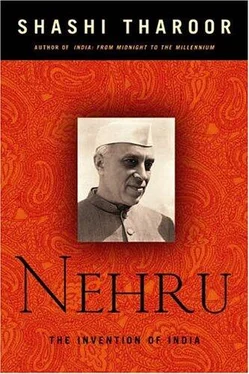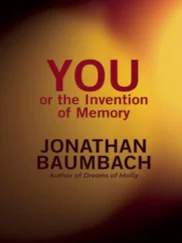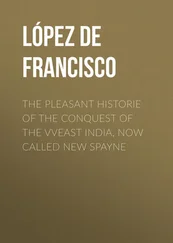Tharoor Shashi - Nehru - The Invention of India
Здесь есть возможность читать онлайн «Tharoor Shashi - Nehru - The Invention of India» весь текст электронной книги совершенно бесплатно (целиком полную версию без сокращений). В некоторых случаях можно слушать аудио, скачать через торрент в формате fb2 и присутствует краткое содержание. Год выпуска: 2004, Издательство: Arcade Publishing, Жанр: Биографии и Мемуары, на английском языке. Описание произведения, (предисловие) а так же отзывы посетителей доступны на портале библиотеки ЛибКат.
- Название:Nehru: The Invention of India
- Автор:
- Издательство:Arcade Publishing
- Жанр:
- Год:2004
- ISBN:нет данных
- Рейтинг книги:5 / 5. Голосов: 1
-
Избранное:Добавить в избранное
- Отзывы:
-
Ваша оценка:
- 100
- 1
- 2
- 3
- 4
- 5
Nehru: The Invention of India: краткое содержание, описание и аннотация
Предлагаем к чтению аннотацию, описание, краткое содержание или предисловие (зависит от того, что написал сам автор книги «Nehru: The Invention of India»). Если вы не нашли необходимую информацию о книге — напишите в комментариях, мы постараемся отыскать её.
Nehru: The Invention of India — читать онлайн бесплатно полную книгу (весь текст) целиком
Ниже представлен текст книги, разбитый по страницам. Система сохранения места последней прочитанной страницы, позволяет с удобством читать онлайн бесплатно книгу «Nehru: The Invention of India», без необходимости каждый раз заново искать на чём Вы остановились. Поставьте закладку, и сможете в любой момент перейти на страницу, на которой закончили чтение.
Интервал:
Закладка:
But it is startling to realize how the emergency is remembered in many middle-class homes as a time of order and relative honesty in government, when officials came to work and did not ask for bribes, when the streets were free of agitations and demonstrations, and blackmarketeers and hoarders were locked up along with troublesome politicians. Tyranny always serves the interests of those who are themselves untouched by it, which is why autocrats and dictators everywhere have always enjoyed some popular support. Nehru’s ashes are no doubt churning the waters of his beloved Ganga at the news of public opinion polls in which a majority of India’s urban middle class say that the problems of the country can best be tackled through dictatorship. Democracy, in their minds, was associated with inefficiency, corruption, and mediocrity.
But if the Nehruvian vision of democracy seems discredited, the democratic system itself has survived. Amid India’s myriad problems, it is democracy that has given Indians of every imaginable caste, creed, culture, and cause the chance to break free of their lot. There is social oppression and caste tyranny, particularly in rural India, but Indian democracy offers the victims a means of redemption through the ballot box. Elections have increasingly given real political power to the lowest of India’s low. For that, we must be eternally grateful to Nehru.
A related distinctive feature of the Nehruvian legacy was secularism — his visionary rejection of India’s assorted bigotries and particularisms. Nehru was, by upbringing and conviction, completely secular. “I have no patience left with the legitimate and illegitimate off-spring of religion,” Jawaharlal wrote in a letter to his Muslim friend Syed Mahmud in 1927. He was scathing about the superstitions and petty prohibitions that came with religious observance. In a speech to students in Bombay on May 20, 1928, Nehru declared: “Much is said about the superiority of our religion, art, music and philosophy. But what are they today? Your religion has become a thing of the kitchen, as to what you can eat, and what you cannot eat, as to whom you can touch, and whom you cannot touch.” Well before partition, Jawaharlal was conscious of the danger that “religion in India will kill that country and its peoples if it is not subdued.” After partition, his uncompromising commitment to Indian secularism made him the symbol of security for India’s Muslims and other minorities, the assurance that pluralist India would never be reduced to Hindu India.
Nehru’s distaste for religion in public life was matched by his family’s disregard for it in their private lives. Displaced Kashmiris to begin with, the Nehru family tree sports Parsi, Sikh, Italian, and now Indian Christian branches, and its roots are universally seen as uncontaminated by the communal and sectarian prejudices of the Hindi-speaking cowbelt. The one strand of political opinion Nehru and his offspring abhorred was that of Hindu religious revivalism. “The [real] danger to India,” Nehru declared bluntly the year before his death, “is Hindu right-wing communalism.” Nehru himself was an avowed agnostic, as was his daughter until she discovered the electoral advantages of public piety. All four generations of Nehrus in public life remained secular in outlook and conduct. Their appeal transcended caste, region, and religion, something almost impossible to say of any other leading Indian politician during Nehru’s life or afterward.
There could be no starker indication of the end of Nehruvianism that, fifty-five years after partition and independence, religion has again become a key determinant of political identity in India. Yet it can be argued that “Hindutva” 10has become a credible political movement precisely because of the nature of the strategy pursued by the Indian state since independence in relation to its religious communities. Nehru’s ostensibly secular Indian state granted major concessions to its minority religions, organized not just as religions but as social communities. Personal law, on matters concerning worship, marriage, inheritance, and divorce, was left to the religious leaders of each community to maintain and interpret; the state passed no law to alter or abridge Muslim personal law, even though Parliament, through the Hindu Code Bill, radically transformed Hindu society in these areas as early as 1956. Educational and cultural institutions of religious minorities are subsidized (in some cases almost entirely funded) by state grants; these include even explicitly religious schools. Muslim divines and preachers routinely receive government grants, and the government disburses considerable sums annually on arranging for them to travel on the annual Haj pilgrimage to Mecca. Indeed, despite the fact that a political party organized on religious lines had partitioned the country, the government did nothing to discourage political mobilization on the basis of religion, so that the rump of Jinnah’s Muslim League not only continued to be active in independent India, but even became an electoral ally of the Congress Party (in Kerala).
If Muslim politicians developed a vested interest in minorityhood, the Nehruvian state evolved a vested interest in its perpetuation: support the leaders of the minority, preempt their radicalization by giving them no cause to fear the state, and so co-opt them into the national consensus. When objections to national policy were voiced on religious grounds, as over the Shah Banu affair in 1986, when a Supreme Court ruling granted a Muslim woman alimony in defiance of Muslim personal law, the state (under Nehru’s grandson, Rajiv Gandhi) rushed to appease the most conservative elements in the minority community. This was not particularly secular in any sense of the term, let alone Jawaharlal Nehru’s, but secularism is what Indians have called it for over five decades.
Perhaps inevitably, the Indian state constructed by Nehru came to be seen by many Hindus as an instrument to control and rein them in, while perpetuating the selfassertion of the minorities (and by this is almost always meant one particular minority, the Muslims). The?Hindutva” project so assiduously being promoted these days depends on a fundamental rejection of what Nehru stood for, by suggesting that it speaks for a true national ethos that he denied. It rejects the pluralist Indianness of The Discovery of India for a narrow “Hinduness.” Both sides of the argument seek vindication for their views in their differing readings of Indian civilizational history, but on the cusp of the twenty-first century it was the non-Nehruvian view that did better at the ballot box.
So it is sadly true that the workings of Nehru’s democratic system, which remains the best guarantee of Indian pluralism, have served to create and perpetuate India’s various particularisms. The Hindu-Muslim divide is merely the most visible, but that within Hinduism, between caste Hindus and the former “Untouchables,” and between the upper castes and the lower intermediate castes known as the “backwards,” is actually transforming Indian society in ways that Nehru did not anticipate. Caste, which Nehru abhorred and believed would disappear from the social matrix of modern India, has not merely survived and thrived, but has become an instrument for political mobilization.
Independent India’s determination to compensate for millennia of injustice to its social underclasses meant that, from the very first, the “Scheduled Castes and Tribes” (so called because the eligible groups of Dalits and aboriginals were listed in a schedule annexed to the Constitution) were granted guaranteed quotas in schools and colleges, in government jobs, both in officialdom and in the public-sector industries, and, uniquely, in Parliament. Indeed, so complete was the country’s acceptance of the principle of affirmative action that the clamor to join the bandwagon of reservations grew, and led to more and more groups wanting reservations of their own. The addition of the “backward classes” as recommended by the Mandal Commission has now taken the total of reserved jobs in the federal government and national governmental institutions to 49.5 percent, and in several states the local reservations are even higher, extending to some 69 percent in Tamil Nadu state. Despite these constitutional protections, inequalities persist between the upper castes and the former “Untouchables.” Affirmative action, perhaps inevitably, benefited a minority of Dalits who were in a position to take advantage of it; independent India has witnessed the creation of privileged sections within formerly underprivileged groups, as the sons and daughters of rich and influential Scheduled Caste leaders get ahead on the strength of their caste affiliation. Caste Hindus have increasingly come to resent the offspring of cabinet ministers, for instance, benefiting from reservations and lower entry thresholds into university and government that were designed to compensate for disadvantages these scions of privilege have never personally experienced.
Читать дальшеИнтервал:
Закладка:
Похожие книги на «Nehru: The Invention of India»
Представляем Вашему вниманию похожие книги на «Nehru: The Invention of India» списком для выбора. Мы отобрали схожую по названию и смыслу литературу в надежде предоставить читателям больше вариантов отыскать новые, интересные, ещё непрочитанные произведения.
Обсуждение, отзывы о книге «Nehru: The Invention of India» и просто собственные мнения читателей. Оставьте ваши комментарии, напишите, что Вы думаете о произведении, его смысле или главных героях. Укажите что конкретно понравилось, а что нет, и почему Вы так считаете.












